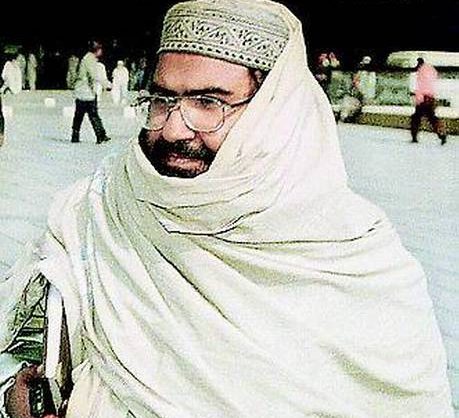
Who is Masood Azhar, and why did India release him in 1999?
For a short and portly man, who once himself said that he was unfit for Jihadi training, the Pakistan-based Masood Azhar has cast quite a wide shadow in the world of terrorists. In the limelight once again for the Pulwama attack, Azhar has survived and continued to build his group, Jaish-e-Mohammed, in Pakistan.
What did he mastermind?
He was jailed in India for five years, inspiring the 1999 hijacking that led to his release by the Indian government. The JeM, led by Azhar, carried out an assassination attempt on a Pakistani President (Gen. Pervez Musharraf, 2003), masterminded the attack on the Indian Parliament and worked in tandem with al-Qaeda and Osama bin Laden on a number of terror projects. Far from paying for his crimes, intelligence sources say Azhar has built a veritable fortress in Bahawalpur town, adding new sections to the JeM’s infrastructure there regularly. In 2009, U.S. news portal McClatchy was able to send a reporter to the JeM’s latest five-acre compound “surrounded by a high brick and mud wall,” which included a tiled swimming pool, stables, and even an ornamental fountain.
What is the Kashmir link?
In recent years, the JeM has been accused of a series of attacks in Jammu and Kashmir and the Pathankot attack. The JeM claimed responsibility for the Pulwama strike, yet Azhar appears to retain a free hand from the government in Islamabad, and has Beijing’s powerful backing. China, despite okaying a ban against the JeM more than a decade ago, has vetoed all attempts to place Azhar on the UN Security Council’s list of terrorists. India, the U.S., France and the U.K. have tried at various times to have Azhar branded as a global terrorist by the 1267 Committee, but China has vetoed the move by putting technical holds. If Azhar is listed as a terrorist by the Security Council, he will face a global travel ban and assets freeze.
Where did he train?
Details of his early life come from Azhar’s confession during interrogation by various agencies in Jammu and Kashmir after he was arrested there in 1994. Born in Bahawalpur on July 10, 1968, Azhar, whose father was the headmaster of a government school, was sent to study at the madrasa in Karachi’s Binori mosque after completing his Standard VIII examination. The Binori mosque’s Jamia Islamia was seen as a training school for Jihadis internationally at the time (he graduated in 1989). Azhar recorded studying with “like-minded” students from Bangladesh, Sudan and various Arab countries, who then went to fight against Soviet forces in Afghanistan, funded in part by the U.S. Azhar too enlisted to fight with the Harkat-ul-Mujahideen at the time, but owing to what he called his “poor physique” he couldn’t complete the mandatory 40 days of training, and was put to work in bringing out the terror outfit’s monthly magazine Sada-e-Mujahid. In the years that followed, as militancy grew in Jammu and Kashmir, and changed leadership from local groups that were essentially “pro-independence” like the Jammu and Kashmir Liberation Front to the Pakistani-controlled groups like the Hizbul Mujahideen, Azhar was tasked with merging two splinter groups, Harkat-ul-Jihad Islami (HuJI) and Harkat-ul-Mujahideen, into the Harkat-ul-Ansar (HuA). It was during Azhar’s visit to the Kashmir Valley to meet with the cadre in January 1994 that security forces arrested him. During his years in prison, Azhar continued to radicalise fellow prisoners, but as in the past, was hampered by his girth from anything more active. When HuA commander Sajjad Afghani tried to help Azhar out from prison, the plan failed and Afghani was killed, as Azhar couldn’t fit in the tunnel they dug out of the Kot Balwal prison.
Who protects him?
In December 1999, when Azhar and other terrorists were handed over by Indian officials, including the then Intelligence Bureau operative and now National Security Adviser, Ajit Doval, in Kandahar, few imagined that a man so publicly released in exchange for hostages would still pose the threat that Azhar does two decades later. Or that Pakistan would protect him with impunity, while the international community appears helpless.
source: The Hindu
